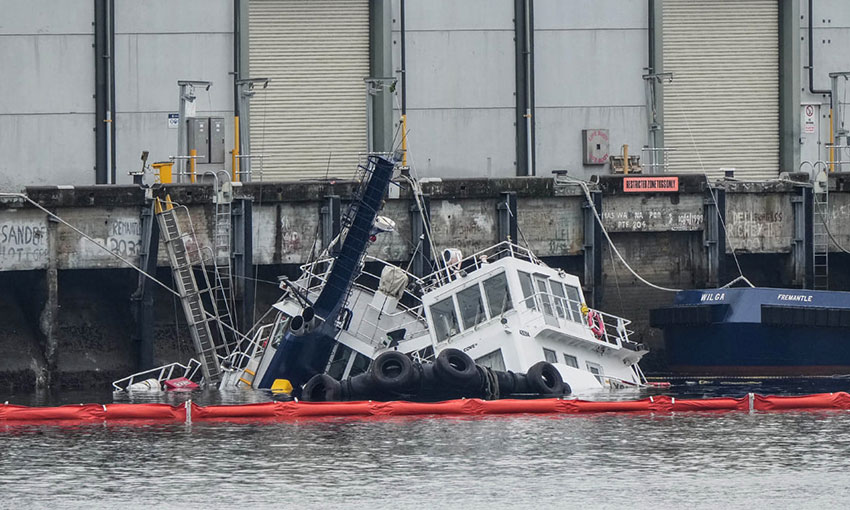ON 28 January this year Australian-flagged cement carrier Goliath allided with two berthed TasPorts tugboats.
The York Cove and Campbell Cove spent the next seven months at the bottom of the Mersey River.
Damage to the tugs resulted in an oil spill and urgent efforts to curb the risk of environmental disaster.
The Environmental Protection Authority deployed oil-spill recovery equipment, and the day after the allision, the EPA said it had removed about 10,000 litres of spillage from the river.
Even after the incident site had stabilised, another 10,000 litres of inaccessible diesel and oil remained inside the structurally unsound wrecks on the river floor.
“This is evidenced by a continual release of oil pollution from within the wrecks that is being managed with daily skimming operations and contained within an oil spill containment boom,” TasPorts said in an update.
TasPorts later said an estimated 60,000 litres of fuel had been spilled into the river. The environment remained a priority as TasPorts shifted focus to removing the wrecks.
TasPorts tasked United Salvage with the wreck removal job. Specialist barges were deployed and expected to commence salvage operations in mid-April.
Receiving barge Intan left from Newcastle and reached Devonport in May, but the lifts did not commence until crane barge St Vincent made the journey from Brisbane.
Severe weather on the east coast disrupted St Vincent’s voyage, and the barge returned to Brisbane. More bad weather delayed a second attempt to move St Vincent down the coast.
With further delays expected, heavy-lift ship AAL Melbourne was tasked with the lift instead.
Frank Mueller, general manager of AAL Shipping Australia, told DCN the project had an interesting set of challenges. For example, the operation could not interfere with the shipping schedule.
“Devonport is a lifeline for Tasmania with ferries bringing in people several times a day,” Mr Mueller said.
“It is also an extremely busy cargo port, handling three million to four million tonnes of freight annually. Therefore, we had to work around traffic, weather and tides to ensure the operation ran as smoothly as our engineering department planned it, in consultation with United Salvage and all other stakeholders.”
York Cove was pulled from the river in early August. However, Campbell Cove was in an unbalanced position, and TasPorts chief operating officer Stephen Casey said it was “unsafe and near impossible” to lift the tug onto AAL Melbourne. The tug was returned to the river floor for a second attempt.
Campbell Cove was removed within a week of York Cove, marking the end of a major operation. The tugs were taken to Brisbane to be scrapped. TasPorts CEO Anthony Donald said more than 100 people had worked on the project over the seven months.
“The salvage work proper was slow and deliberate, and ultimately successful, and reflects the detailed and collaborative planning that was required to complete the work,” he said.
“The company is very pleased to be able to look back on what was a highly successful but complicated salvage exercise.”

